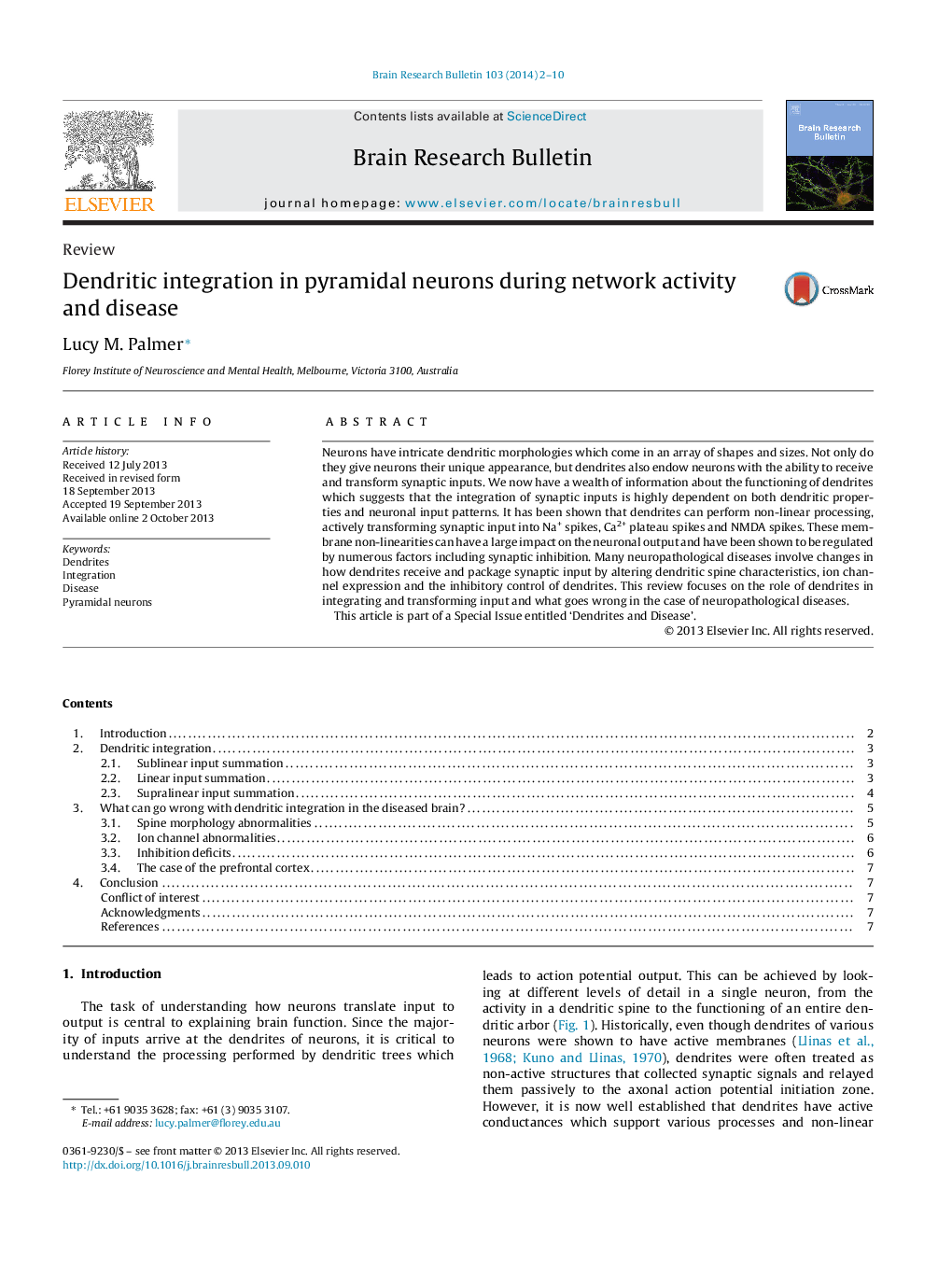| Article ID | Journal | Published Year | Pages | File Type |
|---|---|---|---|---|
| 4318831 | Brain Research Bulletin | 2014 | 9 Pages |
•Review on dendritic integration and the resulting linear or non-linear processing.•Examples are given from both in vitro and in vivo investigations.•Description of the changes in dendritic integration during different neuropathological diseases.•Discussions about dendritic spine function, ion channel characteristics and inhibition in the diseased state.•Highlights from reported abnormalities that effect dendritic integrative properties.
Neurons have intricate dendritic morphologies which come in an array of shapes and sizes. Not only do they give neurons their unique appearance, but dendrites also endow neurons with the ability to receive and transform synaptic inputs. We now have a wealth of information about the functioning of dendrites which suggests that the integration of synaptic inputs is highly dependent on both dendritic properties and neuronal input patterns. It has been shown that dendrites can perform non-linear processing, actively transforming synaptic input into Na+ spikes, Ca2+ plateau spikes and NMDA spikes. These membrane non-linearities can have a large impact on the neuronal output and have been shown to be regulated by numerous factors including synaptic inhibition. Many neuropathological diseases involve changes in how dendrites receive and package synaptic input by altering dendritic spine characteristics, ion channel expression and the inhibitory control of dendrites. This review focuses on the role of dendrites in integrating and transforming input and what goes wrong in the case of neuropathological diseases.This article is part of a Special Issue entitled ‘Dendrites and Disease’.
